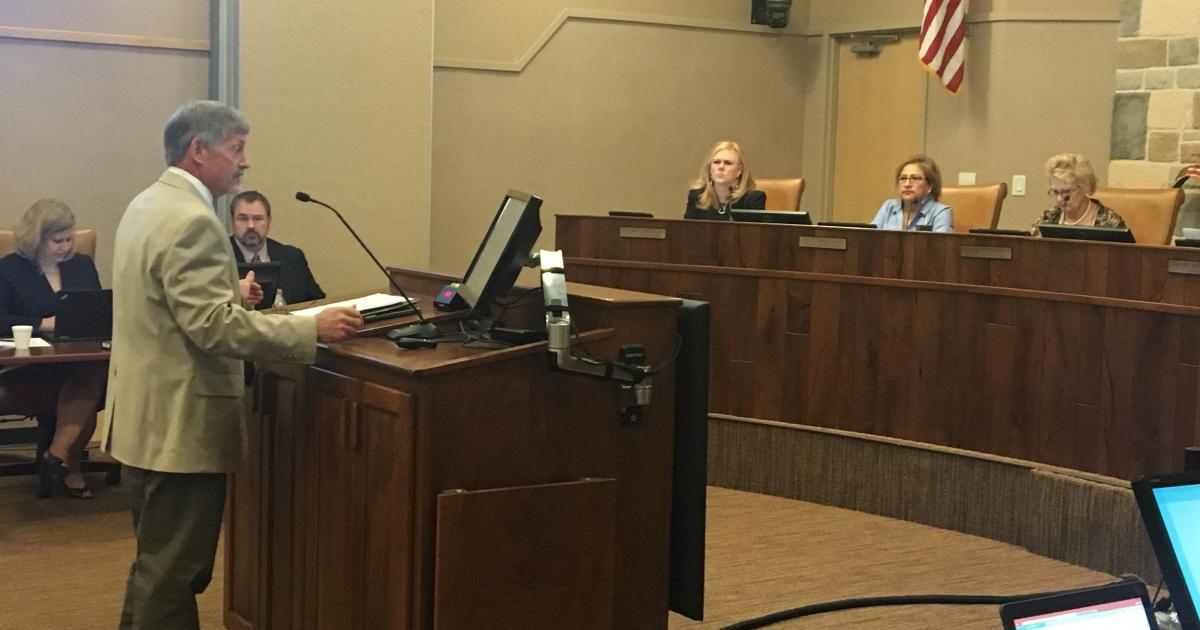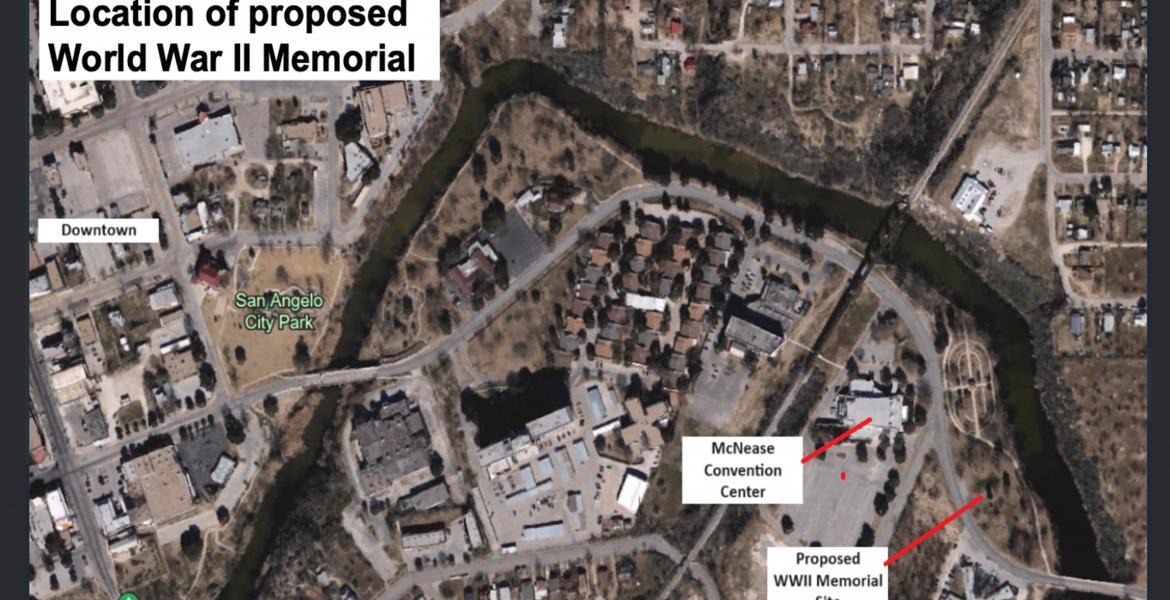The San Angelo City Council discussed further plans to utilize the available water utilities for San Angelo at the regularly scheduled meeting earlier this week.
This segment began with a presentation from Scott Hibbs, who provided an update regarding the West Texas Water Partnership (WTWP).
This is a collaborative effort by the cities of Abilene, Midland and San Angelo to address long term-water needs. The partnership aims to explore long-term opportunities to maximize local supplies, continue to support conservation and develop a 100-year water supply for the region, according to wesrrexaswaterpartnership.com.
Five years ago, in December of 2010, the cities made an agreement to work together during the drought that was affecting the cities.
“This is rather unique in the state of Texas, and that is a collaborative effort between three major west Texas cities,” Hibbs said. “Instead of competing for this resource, they decide to find a way into collectively go looking for the future water supply.”
Hibbs discussed future water supplies by alluding to the decision made by the San Angelo Council 40 years prior to start production on the Hickory Aquifer. The City's capability of harvesting that water relieved city leaders' alarm during the most recent drought. It also came online just as drought conditions were subsiding.
“We are not looking at trying to find a resource to develop today; we are looking for that generational project, so, 50 to 70 years from now, we will have that opportunity to develop a resource.
The questions asked at the time was, could the cities collectively share the resource they had to survive the long drought caused by the summer? The resource that was close in proximity to each city was Lake Ivie. With there being roughly 120 miles between each city, the lake would provide the water resource needed.
The partnership cities are listed as customers of the Colorado River Municipal Water District (CRMWD), and not classified as members. That placed The West Texas Water Partnership in a different category that restricted access to other supplies offered to cities in the CRMWD, like Lake Spence.
Lake Ivey became the main collaborative resource for the three cities, given that it had more water during 2011. In reality, however, the drought was not going to be a short term effort, and the focus of the partnership moved to a longer term strategy with focus on the collective effort.
Hibbs mentioned a number of screen techniques and evaluations were done to determine the resources needed to accompany the 58 million gallons a day (MGD) to fulfill the collective effort. He went on to explain that San Angelo is the “ground zero” of the effects shown from the drought season, and how it eventually reached West Texas entirely.
Ivie remains at 22-24 percent for water capacity currently in June of 2016 according to waterdatafortexas.org. Cities in East Texas can receive up to 70 inches of rain that refills their water reservoirs, Hibbs said.
He added, “We don’t have Spring Flow here unless a thunder storm hits in the right place and then is here; and then it’s gone.”
In 1985, when Lake Ivie was first permitted, 15,000 acre feet was allocated to each individual city a year, Hibbs said. Early in the drought cycle for 2011, the 15,000 was reduced to about 11,000 ac/feet a year collectively for the cities.
“It never was formally adopted, but we knew at that time the drought was having a significant impact on [Lake] Ivie,” Hibbs said.
Ivie, in the current region F plan presented to the council, has a yield to each city of 5,600 ac/feet.
“We have lost 62 percent of the yield of Ivie due to this drought,” Hibbs said.
Overall, the records from the drought in the 1950s is being decimated in comparison to the drought that started in 2011.
Hibbs further emphasized that a change must occur for the future of the West Texas Water Partnership. The effects of the drought from 2011 cost each city to look into new developments for water utilities.
Abilene spent $205 million to conjuctively use the current supplies for an indirect potable reuse project for waste water that is treated to an advanced level and put in Fort Phantom. Possum Kingdom Lake also appeared as a possible resource solution as Hibbs presented to the council.
Midland spent $239 million to tie into the T-Bar Well Field. He mentioned that like San Angelo with the Hickory, the T-Bar was purchased in the 1960s and didn’t serve a functioning role in water utilities until the drought forced Midland to develop the system.
San Angelo spent over $120 million in response to the drought. The Hickory ground water coming online and researching different supplies went into this spending. Hibbs added that other projects were also being considered, including the pilot project for the water reclamation that was recently pulled from SWIFT funding during this council meeting.
Hibbs mentioned over 1 billion dollars in taxpayers' money was spent just to have sustainable water for the current populations of the WTWP. He said that is a staggering number considering this was just used to outlast the drought from 2011. If a long range project had been implemented 10 years ago, that same funding would have provided sufficient infrastructure to produce a new water source.
All in all, the presentation’s purpose was to emphasize that short-term solutions will only provide the appropriate resources to make it through a drought.
Bill Riley, the City of San Angelo’s Utilities Director, presented this idea in a follow-up presentation that looked at the future of the Hickory Aquifer, and the water supply for San Angelo.
Riley said how the water supply for Angelo is determined by having the CRMWD calculate what level of capacity Lake Ivie needs to be based on water usage projections for San Angelo. It is projected that in June 2018, if a no-flow scenario were to happen at Lake Ivie, there would be 12 more months of surface water available for the city by using the Nasworthy, Twin Buttes, and Fisher reservoirs.
Calculating the available water supply by subtracting the time from when Lake Ivie will no longer be available, the evaporation rate of water in West Texas, and the daily demand for San Angelo, an estimated 36 months of surface water will be available. That is a separate estimate of surface water, not including the Hickory Aquifer.

Currently, the Hickory produces 8 MGD, and at full capacity, it could provide up to 12 MGD if further updated. Even though this fits the requirement for San Angelo’s water usage, eventually, a stage three drought would be evident if the only resource being used was the Hickory. That would be after the 36 months of surface water, and if it remained at 8 MGD capacity.
Riley noted that 11 months of surface water was made available due to the spring rain in San Angelo, but further pushed that the City Council needs to discuss other projects as it becomes more apparent that only having one development as the focus doesn’t always yield the best return on investment.
Councilwomen Charlotte Farmer inquired on the available resource at Lake Spence, which currently stands at 13 percent capacity. San Angelo does have a contract with the CRMWD for 3,000 ac/feet, but that’s when the water is available. That is not the case currently, but there was the discussion that Lake Spence’s 13 percent capacity is more than the three reservoirs used by San Angelo.
Riley mentioned the return on investment is always a main focus for him and the water advisory board. This means Spence yields zero ac/feet in his mind given the current water capacity.
“I just want it clear to the public; affordability is being discussed in all these areas of what can be done,” Farmer said.
Councilwomen Elizabeth Grindstaff discussed the cost of transporting the water from Lake Ivie to San Angelo compared to transporting from a line installed from Lake Spence. She said the cost is always looked at with any project being considered.
Grindstaff is a proponent of taking the time to wait and figure other water utilities projects before applying for the funding. That is why she suggested having the SWIFT water application for the $136 million be pulled for the Water Reclamation Project (read more here).
“I think both Mrs. Farmer and I talked on the issue of the cost for the [reuse project]," said Grindstaff. "Is it necessary right now, or do we have a little bit more time to investigate other options before making an application for a project we are not fully committed to?”
By taking the time to reevaluate the pros and cons for other projects, Grindstaff said she believes the goal of securing a water supply that is safe, and will also bring San Angelo into the future, is the best solution.
Riley mentioned that withdrawing from SWIFT now will not impact San Angelo’s ability to gain approval for loans in later years. The Water Advisory Board recommended the SWIFT application be withdrawn at the meeting on Monday, June 21.
The vote was 6-1 with Mayor Dwain Morrison against the withdrawal of the application for SWIFT funding. Morrison didn’t see the logic in withdrawing the application for the money that could be used to estimate what projects would be feasible without having San Angelo be committed to any loan or debt terms.
Subscribe to the LIVE! Daily
Required






Post a comment to this article here: